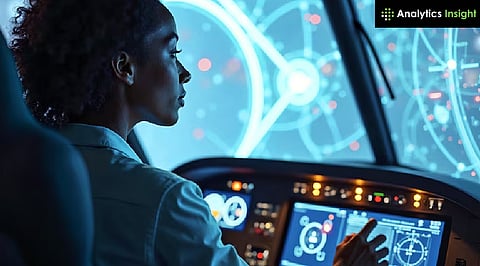

AI is optimizing flight operations, from autonomous navigation to fuel efficiency.
Predictive maintenance powered by AI is reducing downtime and safety risks.
Air traffic control is evolving with AI-driven decision-making and real-time analytics.
AI is becoming super important in the airline business. It's not just about flying planes anymore; it's also helping control everything on the ground. AI is changing how aviation works daily, making flying safer, faster, and a bit smoother.
AI has moved beyond being just an experiment; airlines now depend on it. It makes things run smoother for pilots in the air and ground crews alike. With more flights happening, wild weather, and the need to keep things running at peak levels, automation is a must.
Also Read: Revolutionizing Education Technology and Intelligent Automation
Pilots are really benefiting from AI. It can crunch a ton of data quickly, which helps pilots make better calls. These systems keep tabs on the weather, routes, and fuel use in real-time. This all results in better routes, saving on gas, and fewer delays.
Autopilot has been around for ages, but AI can make changes based on what's happening in real-time and even warn the crew about problems before they even start. This quick help is a lifesaver when things get dicey, like in a storm. It's not taking over for the pilot, but it's like having a super-smart co-pilot.
One of the coolest things AI does is check for wear and tear on the plane. Sensors placed all over the plane collect data during each flight. AI then looks at this info to catch issues before they become major problems.
This early detection system helps airlines fix things early, which prevents breakdowns or delays. It also saves money on the quick fixes and keeps planes in the air. Ultimately, it makes things safer and better all around.
Also Read: How Quantum Sensors Will Change Navigation and Healthcare
AI is changing how air traffic control (ATC) operates. ATC usually depends on people to make choices. Even when they do a great job, it's tough to manage many flights accurately without some help.
AI systems are now lending a hand by checking out traffic, weather, and what's happening on the runway. They can even suggest changing routes and times to keep you away from traffic jams and delays. AI can also crunch a ton of numbers faster than any person, which comes in handy when things get crazy or the weather turns sour.
Some airports are even employing AI to help park planes, handle bags, and move passengers. This makes the whole trip a better experience.
Safety is the top priority in flying, and AI is helping in several ways. Systems can spot odd things happening with a plane and give early warnings. AI can also look at past events to see things people might miss.
AI can spot problems early in the control tower. For example, it can warn controllers about incoming storms or planes flying too close. This lets controllers react quickly and appropriately.
AI is great, but it won't replace us. Think of it as a smart assistant that helps people and machines team up. Air traffic controllers, engineers, and pilots are still in charge, but now they have some awesome support. AI handles the boring stuff so people can focus on what matters. This teamwork is setting a new standard in the industry.
AI is changing flying a lot. From the pilot's seat to mission control, this is making things safer and more affordable. AI can process data super fast and adjust quickly. It's becoming a key assistant, not only in aviation but everywhere. As air traffic increases, AI is essential to keeping flying safe and sound. The future of flight depends on people and tech working together.
